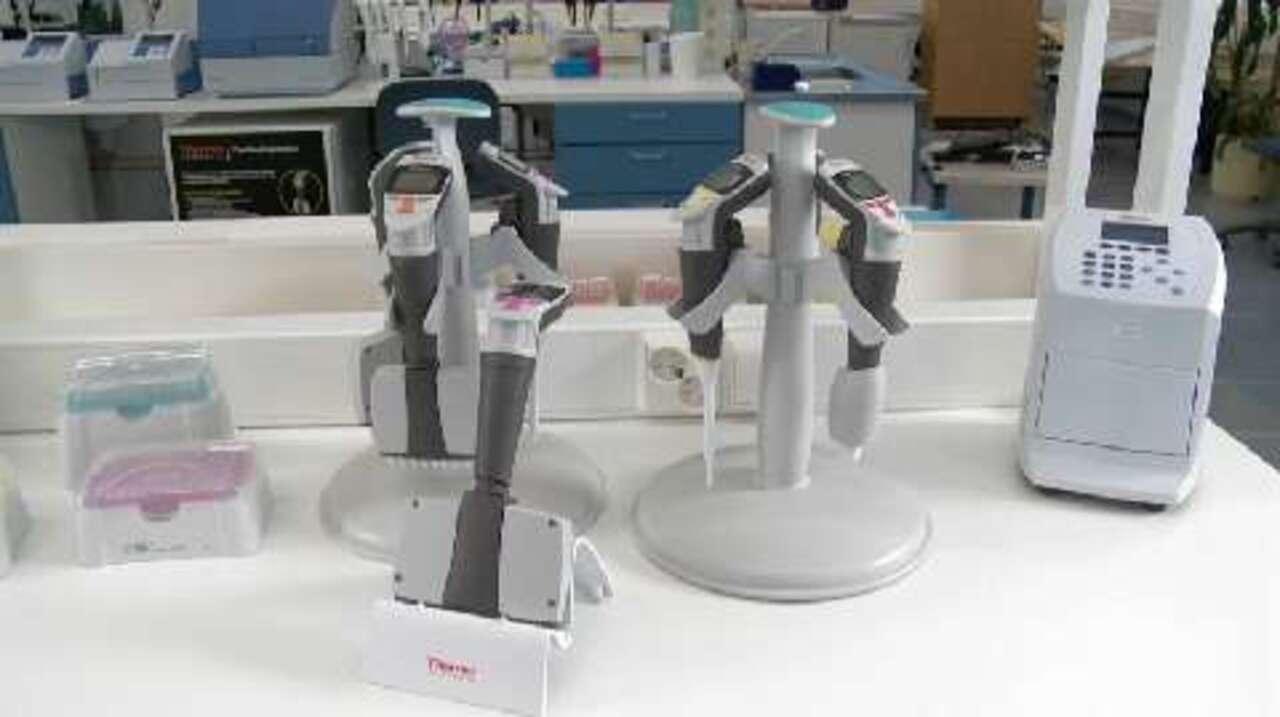Search Thermo Fisher Scientific
Forward, Reverse, Repetitive, & Heterogeneous Sample Pipetting

Quick links
- Pipetting Recommendations for Different Sample Types
- 10 Steps to Improve Pipetting Accuracy
- Pipette Accuracy vs. Precision
- Factors Affecting Pipette Accuracy
- Preventing Cross Contamination
Complete the form and download a pdf version of the GLP Guide.
For standard pipetting use the forward technique:
Recommended for aqueous solutions, such as buffers, diluted acids, or alkalis, this technique is commonly used when pipetting and mixing a sample or reagent into another liquid.

- Press the operating button to the first stop.
- Dip the tip into the solution to a depth of 1cm, and slowly release the operating button. Withdraw the tip from the liquid, touching it against the edge of the reservoir to remove excess liquid.
- Dispense the liquid receiving vessel by gently pressing the operating button to the second stop. This action will empty the tip. Remove the tip from the vessel, sliding it along the wall of the vessel.
- Release the operating button to the ready position.
For solutions with high viscosity or tendency to foam use the reverse technique:
This technique is commonly used with air displacement pipettes, and is recommended for precisely pipetting small volumes. Reverse pipetting avoids the risk of sample splash, foaming, or bubble formation.

- Press the operating button to the second stop.
- Dip the tip to a depth of 1cm, and slowly release the operating button. This action will fill the tip. Withdraw the tip from the liquid, touching it against the edge of the reservoir to remove excess liquid.
- Dispense the liquid into the receiving vessel by depressing the operating button gently and steadily to the first stop. Hold the button in this position. Some liquid will remain in the tip, and this should not be dispensed. Remove the tip by sliding it along the wall of the vessel.
- The liquid remaining in the tip can be pipetted back into the original solution or thrown away with the tip.
- Release the operating button to the ready position.
For repeat pipetting of the same volume use the repetitive pipetting technique:
This technique is intended for repeat dispensing of the same volume, and is ideal for adding reagents into tubes or wells of microplates.

- Press the operating button to the second stop.
- Dip the tip into the solution to a depth of 1cm, and slowly release the operating button. Withdraw the tip from the liquid,
- Dispense the liquid into the receiving vessel by gently pressing the operating button to the first stop. Hold the button in this position. Some liquid will remain in the tip, and this should not be dispensed. Remove the tip by sliding it along the wall of the vessel.
- Continue pipetting by repeating steps 2 and 3.
Heterogeneous sample pipetting technique:
This technique is used for pipetting heterogeneous samples, such as blood or serum. Typically, pre-rinsing the tip is not possible, and the full sample should be dispensed for accurate analysis.

- Press the operating button to the first stop. Dip the tip into the sample. Make sure the tip is sufficiently below the surface.
- Release the operating button shortly to the ready position. This action will fill the tip with the sample. Remove the tip from the solution by sliding it along the wall of the vessel.
- Dip the tip into the target solution. Make sure the tip is sufficiently below the surface.
- Press the operating button to the first stop and release it slowly to the ready position. Do not remove the tip from the solution. Repeat this process until the interior wall of the tip is clear.
- Remove the tip from the solution by sliding it along the wall of the vessel. Press the operating button to the second stop, and completely empty the tip.
- Release the operating button to the ready position.
California Proposition 65 Warning: Products manufactured with polycarbonate (PC), polyethylene terephthalate (PET), polyethylene terephthalate glycol (PETG) or polystyrene (PS) contain chemicals known to the State of California to cause cancer, birth defects or other reproductive harm.




